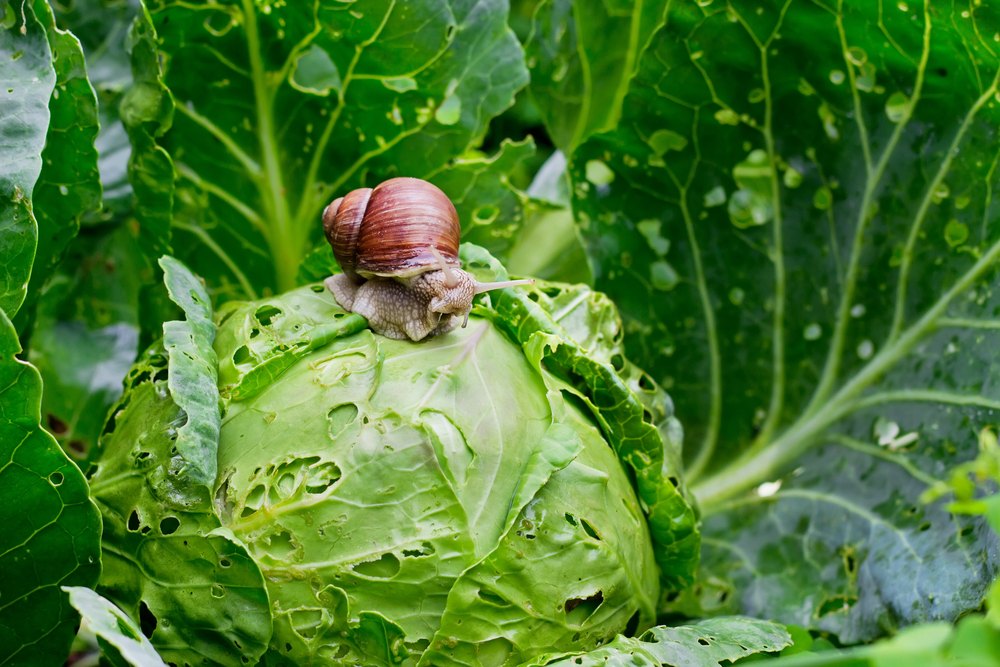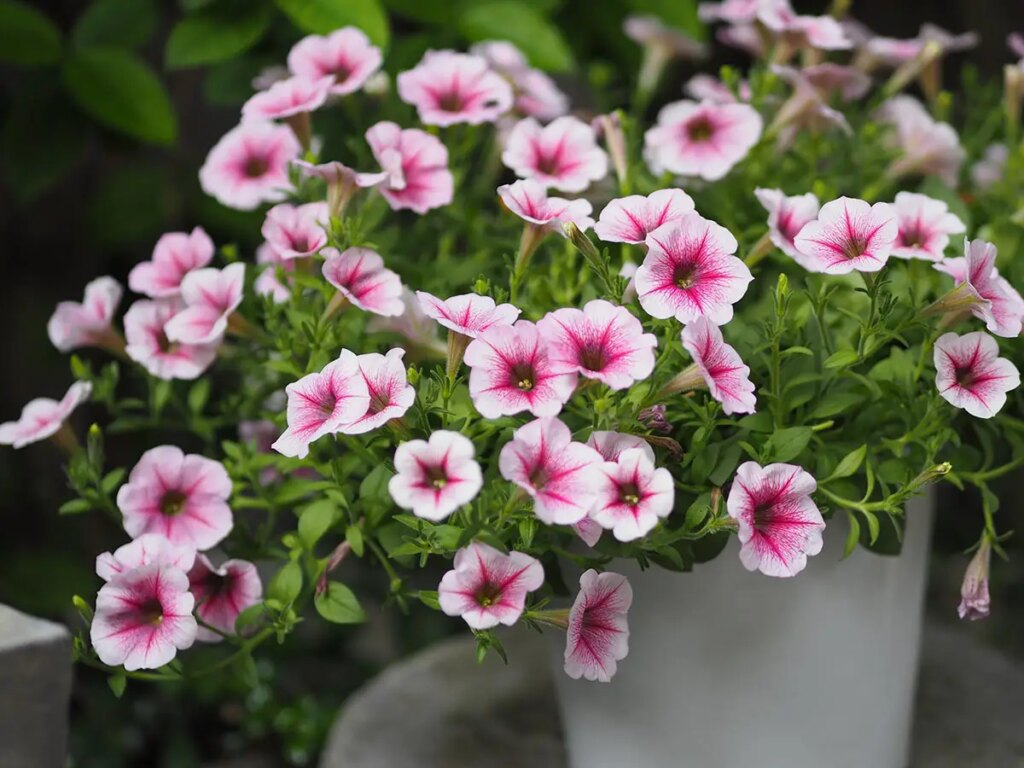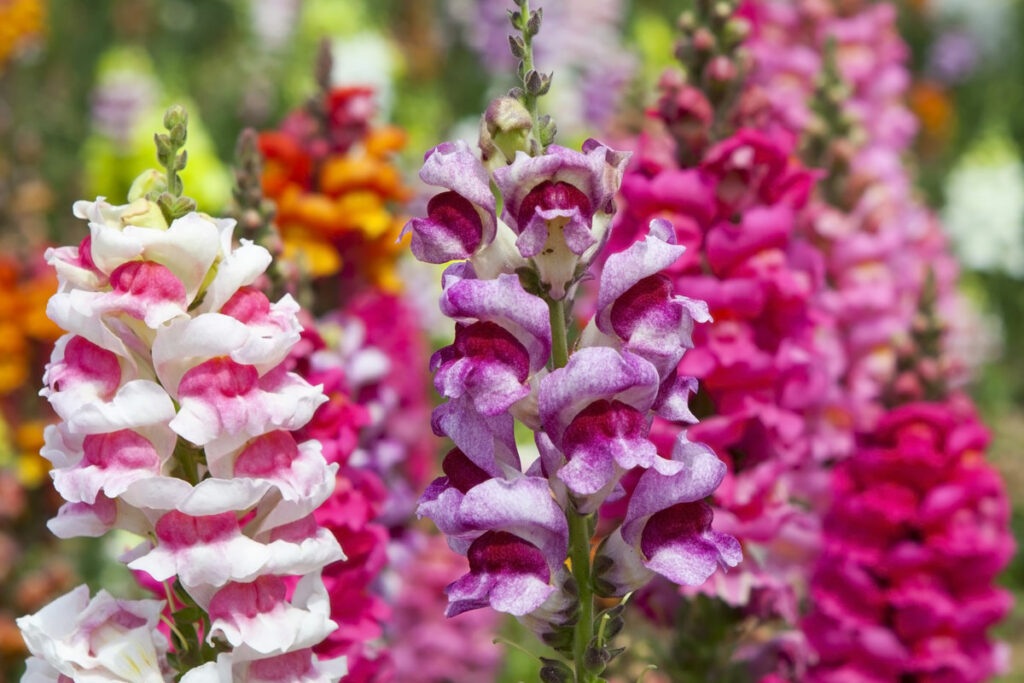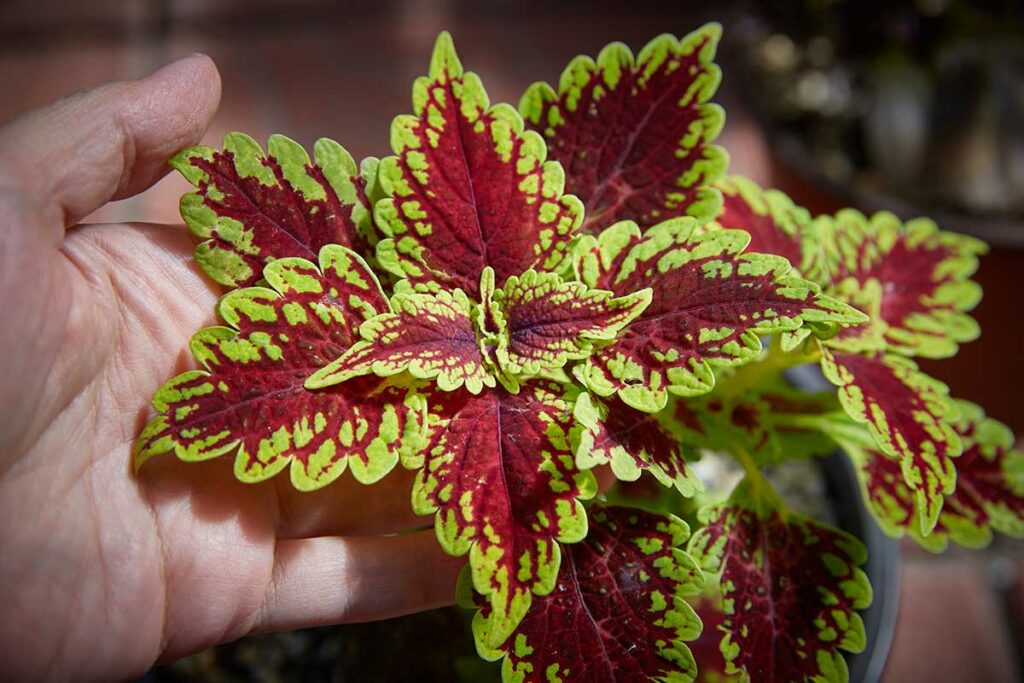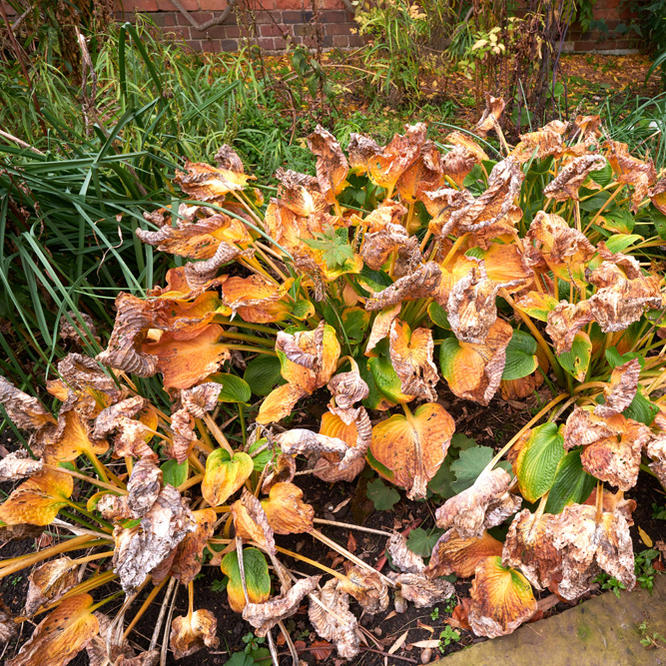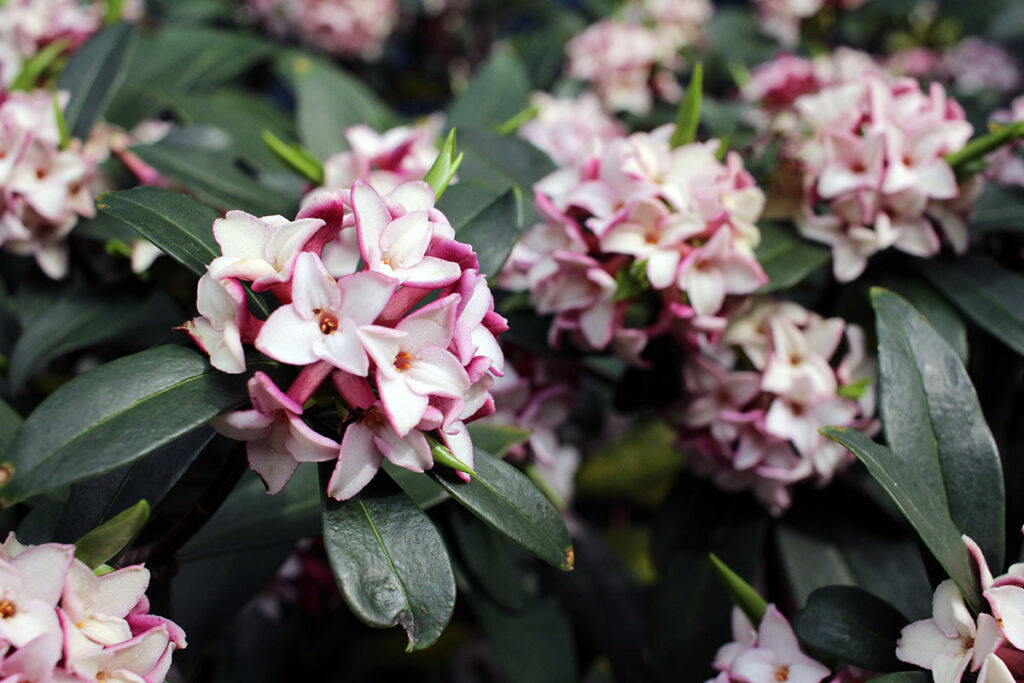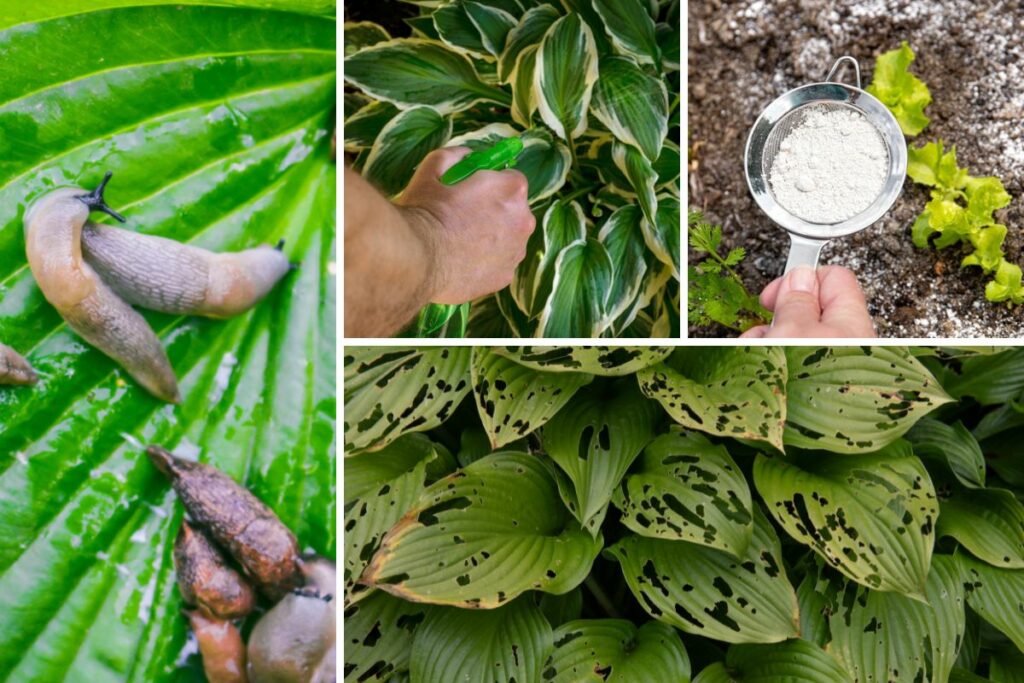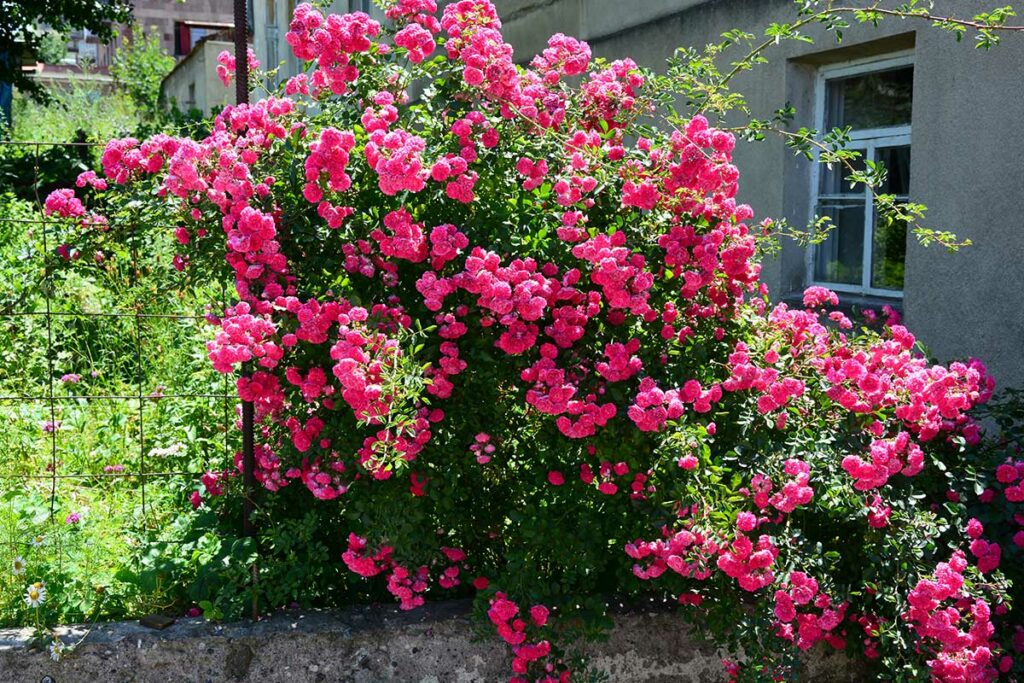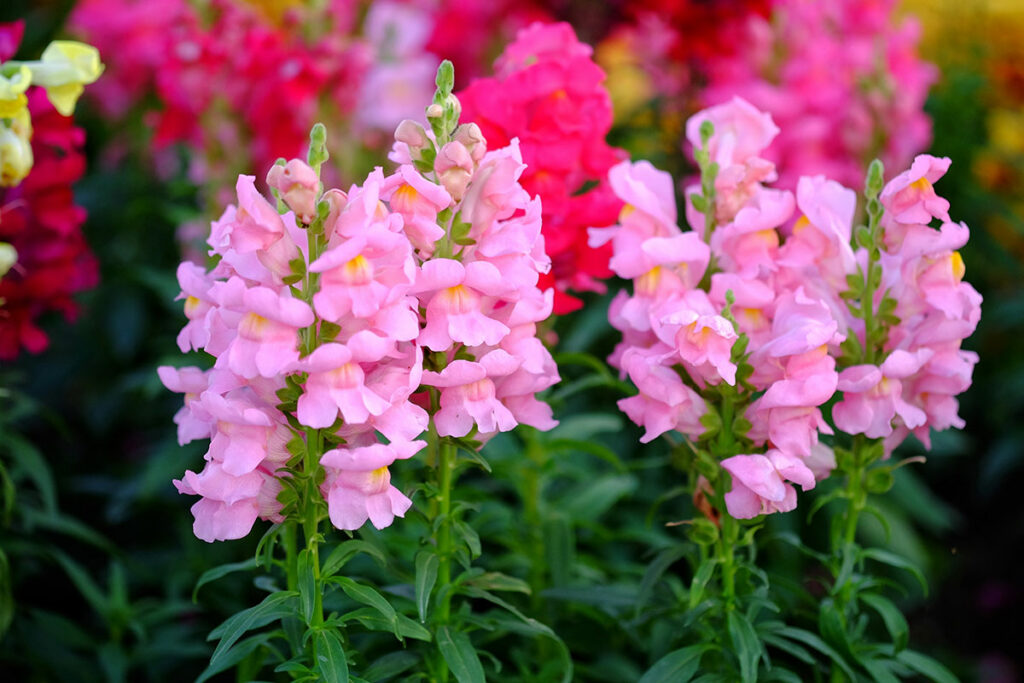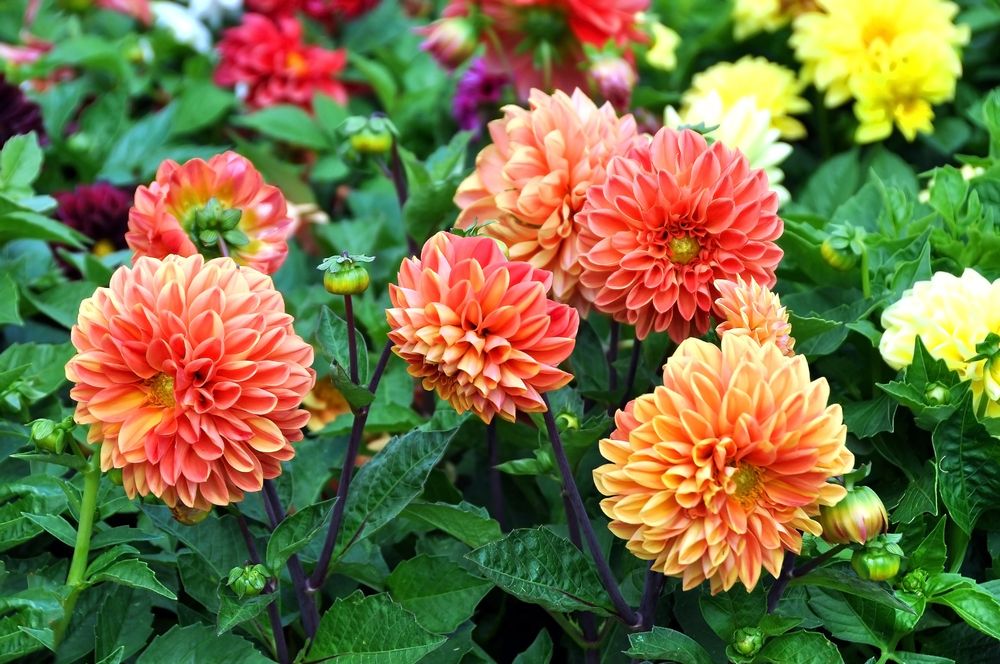
Dahlias are a stunning addition to any garden, with their vibrant colors and intricate petal arrangements. These beautiful blooms not only make a visual impact but also serve as a treat for pollinators. To get the most out of these captivating flowers, properly fertilizing your dahlias is essential.
In this article, we’ll share some tips on how to nourish your dahlias, helping them flourish and brighten up your garden throughout the season.
Fertilizing dahlias is integral to maintaining their overall health, from strong roots to robust stems. By providing the right nutrients, you can ensure that your dahlias grow well, produce ample blooms, and stay resistant to pests and diseases.
Before we dive into specific tips for fertilizing dahlias, it’s important to understand their unique nutrient requirements. This will enable you to give your plants the best chance to put on the spectacular show you long for.
Dahlias, known for their dramatic and varied appearances, appreciate a balanced approach to fertilization. Offering measured amounts of key nutrients like nitrogen, phosphorus, and potassium will provide your dahlias with the necessary components to develop and maintain their vigor.
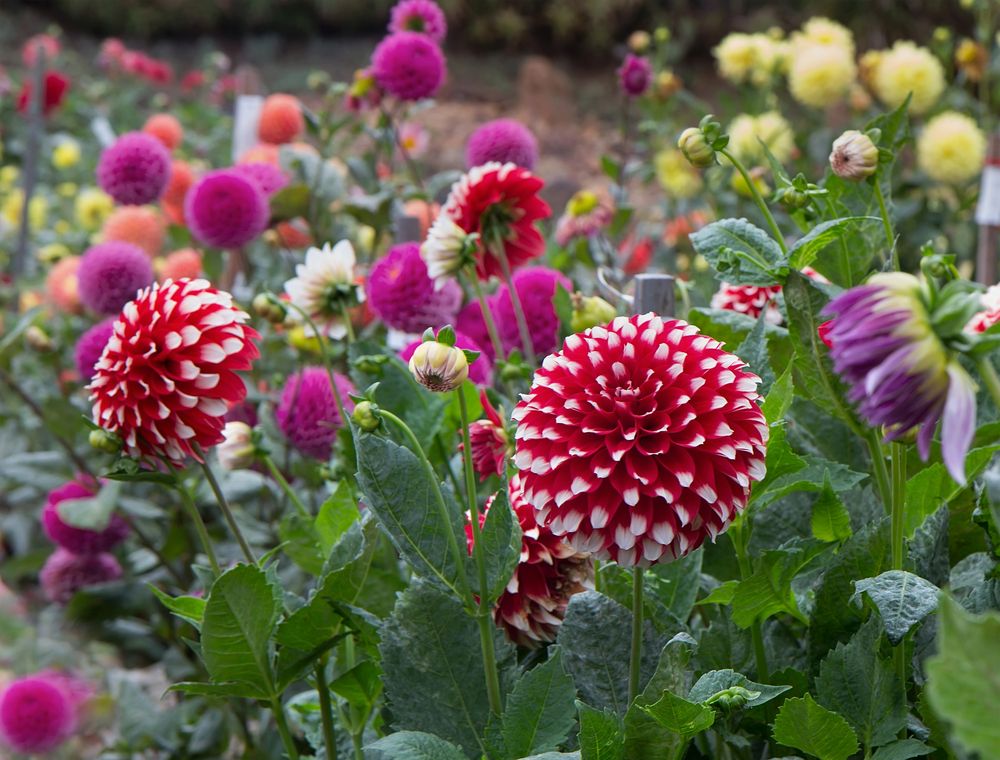
Let’s dive into the valuable tips for fertilizing your dahlias, guiding you on the journey to a flourishing garden.
Choosing the Right Fertilizer
Organic Vs. Inorganic
When fertilizing dahlias, gardeners have the choice between organic and inorganic fertilizers. Organic fertilizers are derived from natural sources, such as animal manure, bone meal, and fish emulsion. They release nutrients slowly, providing a steady supply to your dahlias throughout the growing season. Organic fertilizers also improve soil structure and promote healthy microbial growth, which in turn helps your plants absorb nutrients more effectively.
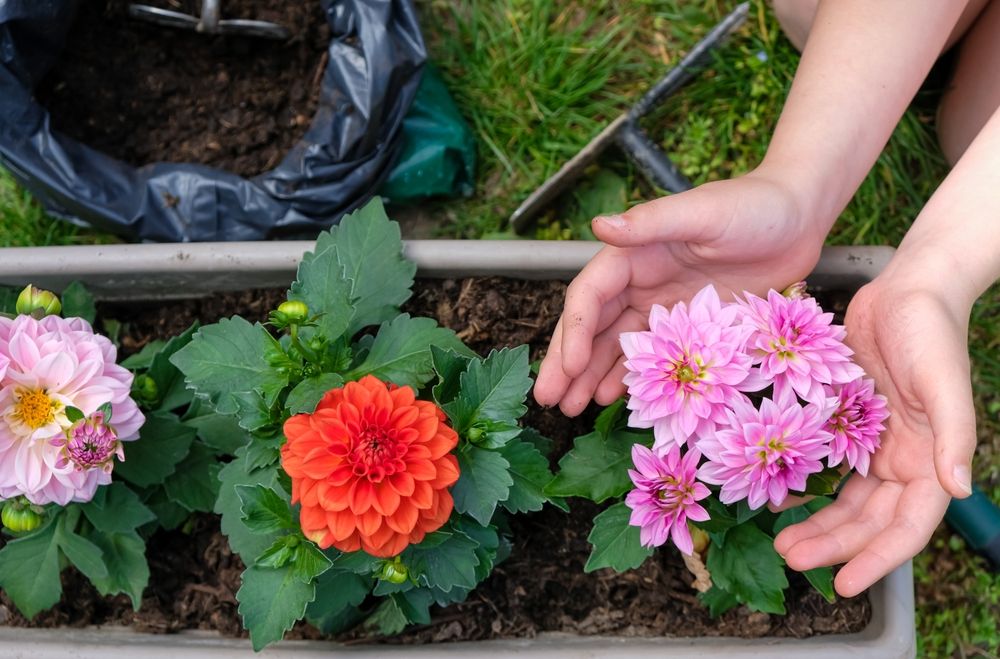
Inorganic fertilizers, also known as synthetic fertilizers, are produced from minerals or chemically-derived sources. These fertilizers release nutrients more quickly than organics, making them ideal for a quick boost. However, they may not provide the long-lasting support that organic fertilizers do, and overuse can lead to nutrient imbalances and potentially harm your plants.
Nutrient Ratios
When selecting the right fertilizer for your dahlias, it’s essential to pay attention to the nutrient ratios. Fertilizers are categorized by their nutrient content, indicated by three numbers representing nitrogen (N), phosphorus (P), and potassium (K) levels. For example, a 10-10-10 fertilizer will contain equal amounts of all three nutrients, while a 5-10-5 would have higher phosphorus content.
Dahlias benefit from a well-balanced fertilizer with a 1-2-2 ratio, such as a 5-10-10 formula. This ratio provides:
- Adequate nitrogen for healthy foliage growth
- High phosphorus for sturdy root development and vibrant blooms
- Sufficient potassium for overall plant health and disease resistance
Applying a fertilizer with this balanced nutrient ratio will help support your dahlias’ growth and encourage beautiful blooms. Remember to follow the manufacturer’s application instructions and avoid over-fertilizing, which can lead to weak plants and fewer flowers.
Determining the Proper Amount of Fertilizer
To ensure your Dahlias grow healthy and vibrant, it’s crucial to apply the right amount of fertilizer. Too little may result in poor growth, while too much can damage your plants. In this section, we’ll discuss how to determine the proper amount of fertilizer for your Dahlias.
Firstly, consider the type of fertilizer you’re using. Fertilizers come in various formulations, with different ratios of the primary nutrients – nitrogen (N), phosphorus (P), and potassium (K). For Dahlias, it’s best to use a balanced fertilizer with a relatively even N-P-K ratio, such as 10-10-10 or 15-15-15.
The soil in which your Dahlias are planted is another vital factor in determining the proper amount of fertilizer. Start by taking a soil test to learn what nutrients your soil may be lacking or have in excess. Based on the test results, you can then adjust the fertilizer dosage accordingly.
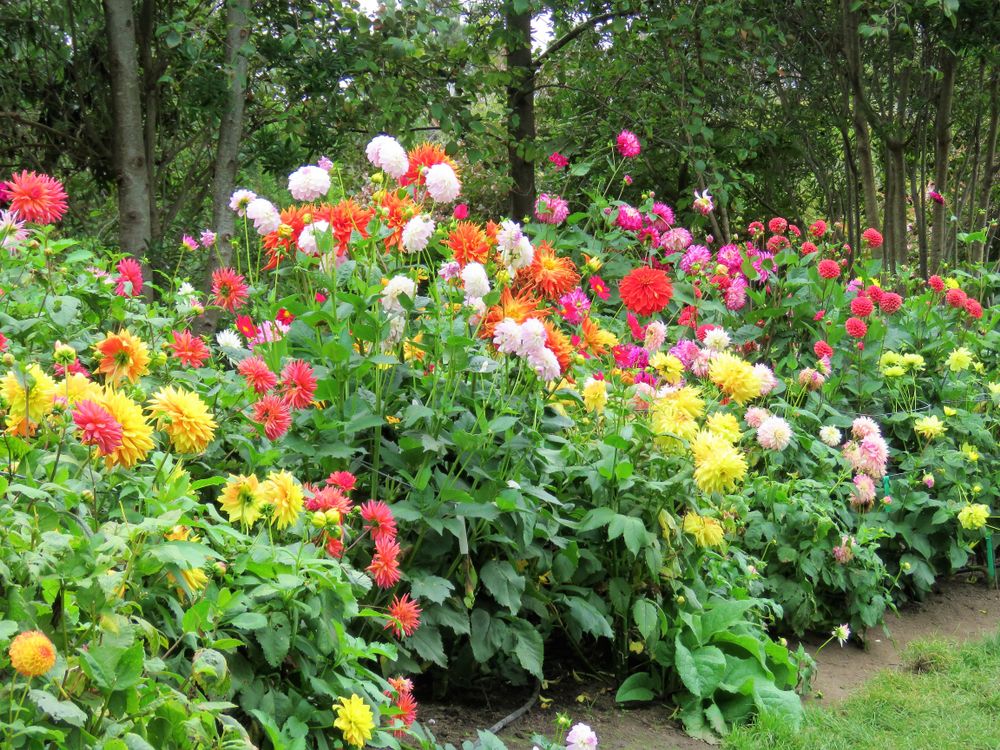
In general, Dahlias should be fertilized once the sprouts emerge from the soil, and then every three to four weeks during the growing season. Here’s a guideline for applying fertilizer to your Dahlias:
- Initial feeding: Apply 2 tablespoons of granular fertilizer per square foot of planting area, working it into the top few inches of soil.
- Subsequent feedings: For liquid fertilizers, mix at a ratio of 1 tablespoon per gallon of water. For granular fertilizers, use 1 tablespoon per square foot.
Remember to always follow the manufacturer’s instructions on the fertilizer package to ensure proper usage. Keep an eye on your Dahlias after each feeding, and adjust as needed if you observe any changes in their growth or overall health.
Remember, water is essential in helping Dahlias absorb the nutrients from the fertilizer. Water your Dahlias regularly, ensuring that the soil remains consistently moist but not soggy.
By taking the time to determine the proper amount of fertilizer for your Dahlias, you’ll be well on your way to growing beautiful, flourishing plants that will brighten up your garden all season long.
Fertilizing Frequency and Timing
When to Begin Fertilizing Dahlias
It’s important to start fertilizing dahlias at the right time to promote healthy growth and beautiful blooms. Begin fertilizing dahlias once the plants reach a height of about 6 inches or have several sets of leaves. This typically occurs approximately 30 days after planting.
Fertilize dahlias every 3 to 4 weeks throughout the growing season, ensuring that you stop about a month before your area’s anticipated first frost date.
Adjusting Fertilizer Application for Blooming Phase
As dahlias enter the blooming phase, adjust the fertilizer application to support flower development. During the blooming period, it’s best to use a fertilizer that’s lower in nitrogen but higher in phosphorus and potassium. This helps encourage vibrant blossoms and strong stem growth while reducing the risk of excessive leaf growth that could drain energy from the blooms.
You can use either granular or liquid fertilizers during the blooming phase, but make sure they meet the nutrient requirements as mentioned earlier. Ensure that you follow label instructions for application rates and methods, as using too much fertilizer can harm your plants.
Remember to water your dahlias generously after each fertilization. Sufficient watering helps to distribute the nutrients evenly, aiding in the absorption by the plant roots. Additionally, watering helps to prevent fertilizer burn, which can damage your dahlias.
Application Methods
There are several methods to apply the required fertilizers for your Dahlias. We’ll discuss three popular and effective methods: Foliar Feeding, Top Dressing, and Incorporating into Soil.
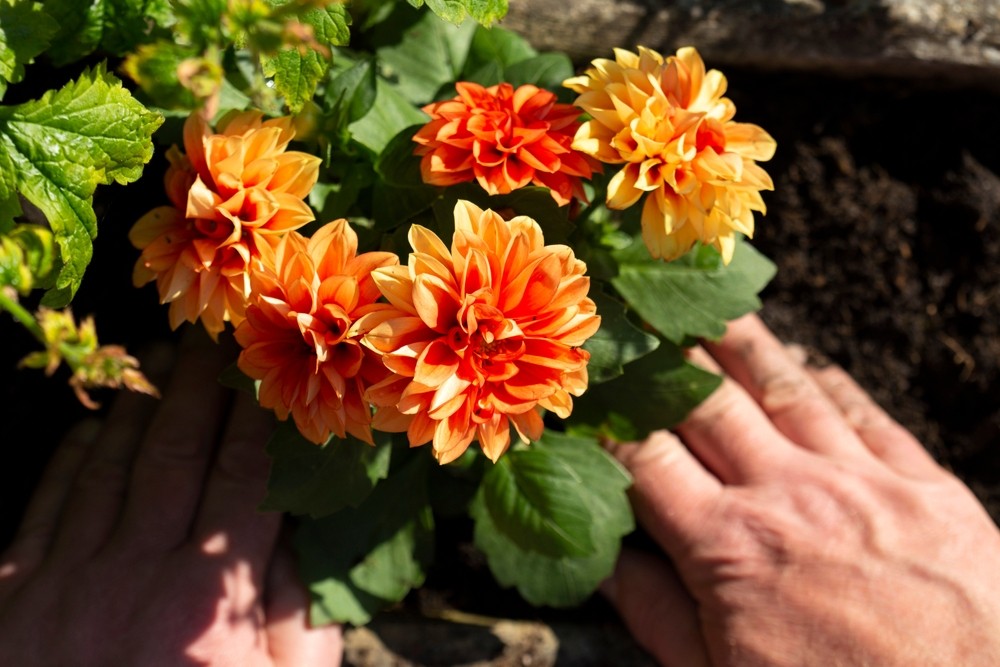
Foliar Feeding
Foliar feeding involves applying a diluted liquid fertilizer directly to the plant’s leaves. This allows for quick absorption of nutrients into the plant. Here’s how to do it:
- Choose a liquid fertilizer specifically designed for foliar feeding or create your own by diluting a water-soluble fertilizer.
- Make sure to apply the solution early in the morning or late in the afternoon to avoid leaf scorching from the sun.
- Lightly mist the leaves, covering both the upper and lower surfaces.
- Monitor your dahlias and adjust the frequency of your applications as needed (usually every 2-4 weeks).
Note: Avoid applying too much or too frequently, as this may cause leaf burn or other issues.
Top Dressing
Top dressing is the process of adding a layer of fertilizer to the soil surface around the base of your Dahlias. This method enables the nutrients to gradually seep into the root zone as water is applied:
- Choose a granular, slow-release fertilizer with an appropriate NPK ratio for dahlias.
- Sprinkle the fertilizer evenly around the base of the plant, following the recommended application rate.
- Be careful not to let the fertilizer touch the stem to prevent burning.
- Refer to the fertilizer’s label for guidelines on reapplication intervals.
Tip: Keep in mind that top-dressing doesn’t always provide the quickest nutrient delivery, so consider combining it with other methods for optimal growth.
Incorporating into Soil
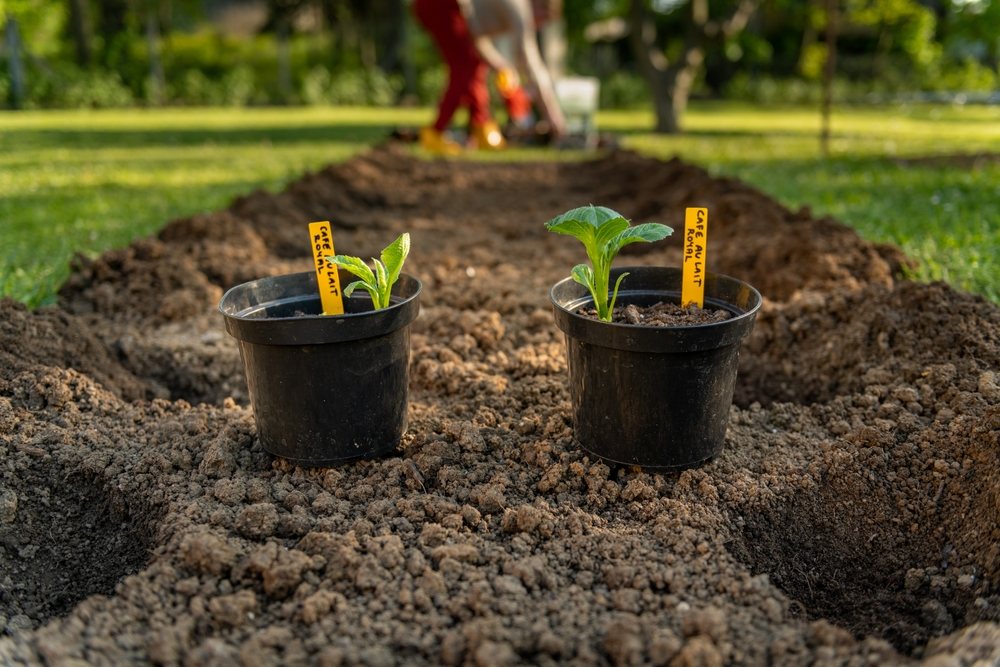
Incorporating fertilizer into the soil promotes a strong root system and ensures a steady supply of nutrients to the dahlias. This method works best when preparing the planting site:
- Select a suitable granular fertilizer with the right NPK ratio for dahlias.
- Till the soil to a depth of 8-12 inches, making sure to remove any weeds or debris.
- Mix in the recommended amount of fertilizer evenly throughout the tilled soil.
- Plant your dahlias at the appropriate spacing and depth, then water well.
Note: You might need to supplement with additional fertilizer during the growing season, depending on the plant’s performance and soil conditions.
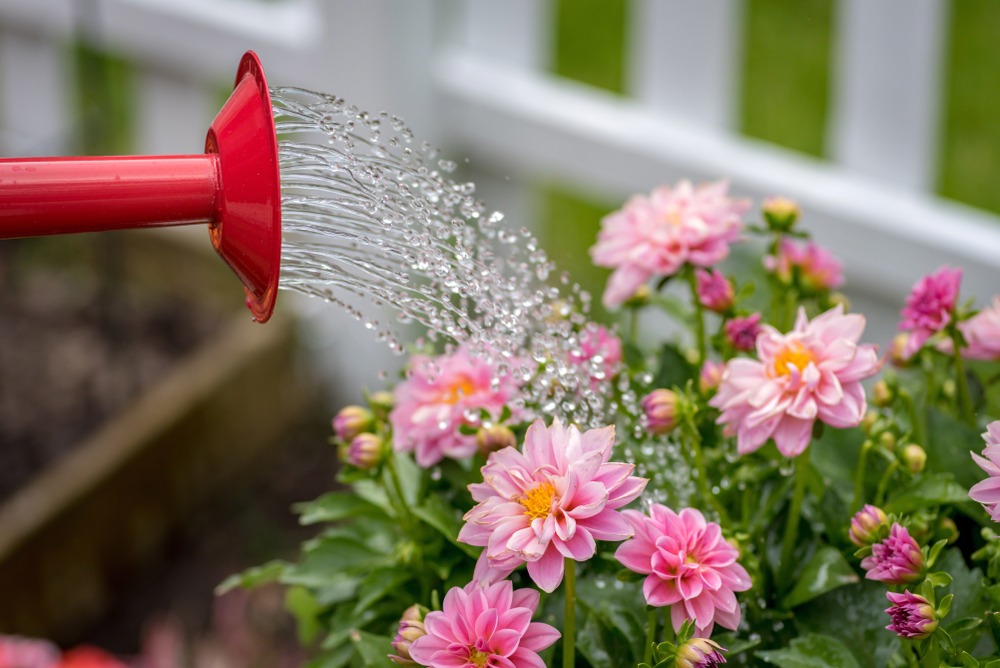
Dealing with Common Issues
When it comes to fertilizing dahlias, there are a few common issues that gardeners may encounter, such as over-fertilization and nutrient deficiencies. In this section, we’ll discuss these problems and provide some friendly solutions.
Over-Fertilization
Over-fertilization can be detrimental to dahlias, as too much fertilizer can cause the plants to produce more foliage and fewer flowers. To avoid this problem, be sure to follow the recommended fertilizer amounts and application frequency for dahlias. If you suspect over-fertilization, here’s what to do:
- Reduce the amount of fertilizer you’re using on the affected plants
- Water the plants well to help flush out excess nutrients from the soil
- Consider using a lower-nitrogen fertilizer to encourage better flower production
Nutrient Deficiency Signs and Solutions
Dahlias can also experience nutrient deficiencies, which can affect their overall health and flower production. Here are some common signs of nutrient deficiencies and their respective solutions:
- Yellowing leaves: A common sign of nitrogen deficiency. Increase the nitrogen content in the fertilizer and apply it according to the recommended schedule.
- Stunted growth: This could be due to a lack of phosphorus or potassium. Use a balanced fertilizer that contains adequate amounts of phosphorus and potassium.
- Purple-tinged leaves: This may indicate a phosphorus deficiency. Choose a fertilizer with a higher phosphorus content and apply it according to the recommended schedule.
In summary, dealing with common issues while fertilizing dahlias involves being mindful of the fertilizer used and its application. By addressing over-fertilization and nutrient deficiencies, you can help ensure the health and beauty of your dahlias.
Evaluating and Adjusting Fertilizer Practices
Evaluating your fertilizer practices is essential to ensure your dahlias grow healthy and vibrant. Start by observing the dahlias’ growth and color. Healthy dahlias have deep green leaves, sturdy stems, and vibrant blooms. If your dahlias are showing any signs of nutrient deficiency, it’s time to adjust your fertilizer practices.
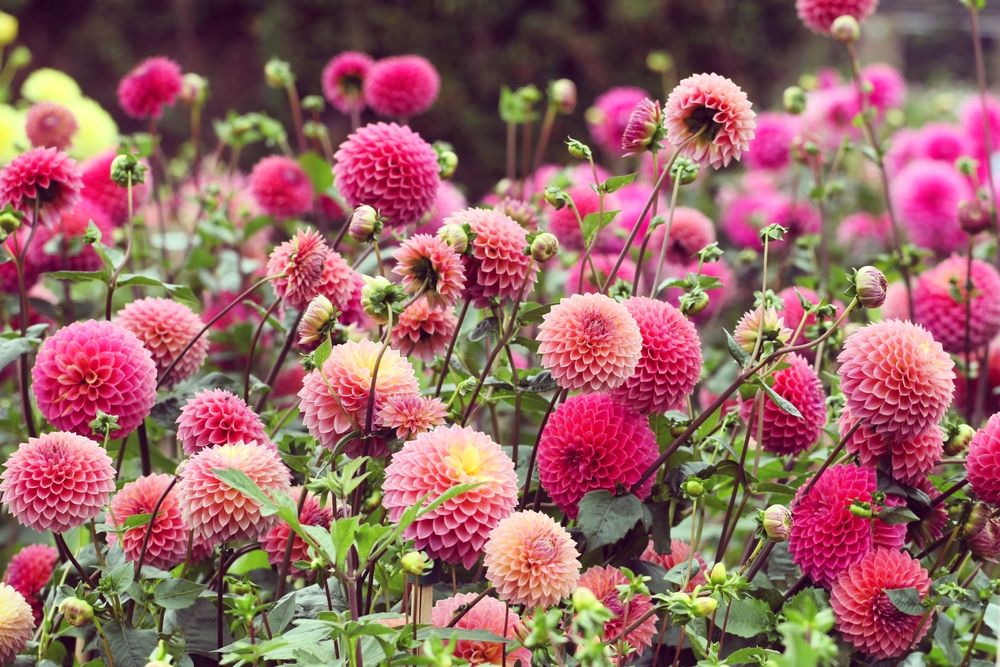
When fertilizing dahlias, it’s crucial to strike a balance between nitrogen (N), phosphorus (P), and potassium (K). Dahlias need a ratio of N:P, which is commonly found in a 1:2:2 or 1:3:2 fertilizer. Keep in mind that excess nitrogen may result in lush foliage at the expense of blooms, so moderation is key. To ensure proper absorption, fertilize your dahlias during their growth phase and at adequate intervals, which is typically every 3-4 weeks.
Monitor the soil’s pH level as well. Dahlias prefer slightly acidic to neutral soil with a pH range of 6.0 to 7.0. Use a soil pH tester to determine your garden bed’s pH level. If the pH is too high or low, make the necessary amendments to achieve the appropriate range.
Don’t forget the importance of organic matter! Incorporating compost or well-rotted manure into the soil before planting your dahlias will provide essential nutrients and improve soil structure. Maintaining 2-3 inches of mulch on the surface of the soil throughout the growing season will help retain moisture, suppress weeds, and regulate soil temperatures.
Remember to water your dahlias consistently, especially during dry spells. Dahlias require about 1 inch of water per week to thrive. Overwatering and underwatering can negatively impact nutrient absorption and overall plant health.
Lastly, always read and follow the manufacturer’s instructions for application rates and methods when using commercial fertilizers. By paying close attention to your dahlias’ needs, evaluating their progress, and adjusting your fertilizer practices accordingly, you’ll be well on your way to cultivating a stunning dahlia garden!





